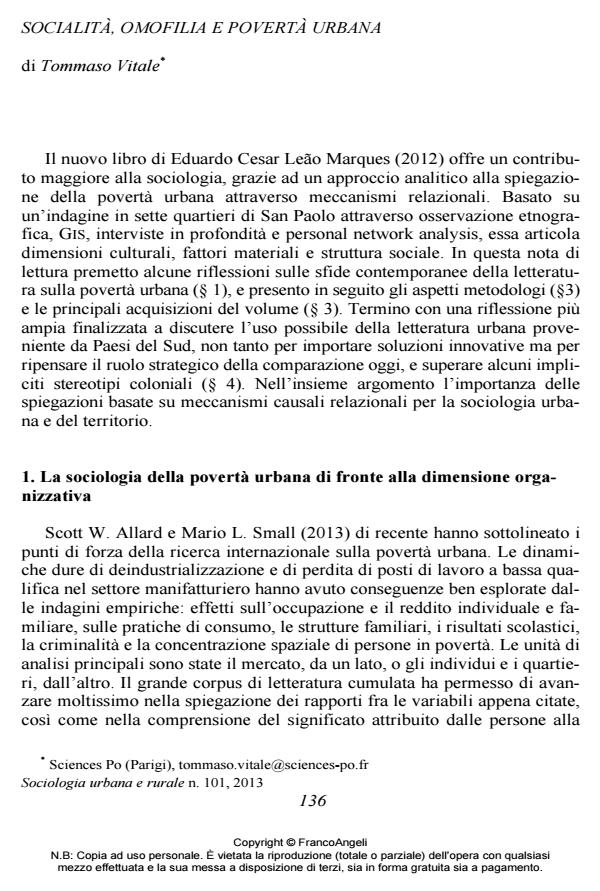Sociability, Homophily and Urban Inequalities
Journal title SOCIOLOGIA URBANA E RURALE
Author/s Tommaso Vitale
Publishing Year 2013 Issue 2013/101
Language Italian Pages 13 P. 136-148 File size 239 KB
DOI 10.3280/SUR2013-101011
DOI is like a bar code for intellectual property: to have more infomation
click here
Below, you can see the article first page
If you want to buy this article in PDF format, you can do it, following the instructions to buy download credits

FrancoAngeli is member of Publishers International Linking Association, Inc (PILA), a not-for-profit association which run the CrossRef service enabling links to and from online scholarly content.
Current debates on urban poverty raise two main research questions, on the role of organizations and social services on enlarging social capital, as well as on the effects of segregation on personal networks of the poor. The book of Eduardo Marques (2012) on Sao Paulo analyses 239 personal networks to answer to these questions. It shows that the relation between spatial segregation and personal network is not linear, and that personal networks of the poor can vary, with different extension and many type of sphere of sociability. Networks characterised by strong homophily and higher localism, and sociability based on family and neighbourhood ties, present worse social condition as they tend to restrict access to material and immaterial goods and services. The empirical inquiry on urban poverty in Sao Paulo opens up a broader reflection on the comparisons among cities of the North and the South, as well as on the heuristic of explanations based on relational mechanisms (i.e.: the economies of ties, or the association between trust and homophily).
Keywords: Urban Inequality, Segregation, Urban Sociology, Social Capital, Network Analysis, Poverty.
Tommaso Vitale, Socialità, omofilia e povertà urbana in "SOCIOLOGIA URBANA E RURALE" 101/2013, pp 136-148, DOI: 10.3280/SUR2013-101011